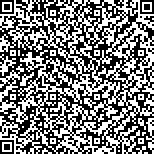赵姣姣,赵娅男,周静,等.踝关节本体感觉训练对丘脑梗死患者踝关节本体感觉、平衡功能及步态的影响[J].中华物理医学与康复杂志,2025,47(9):799-803
扫码阅读全文

|
| 踝关节本体感觉训练对丘脑梗死患者踝关节本体感觉、平衡功能及步态的影响 |
|
| |
| DOI:10.3760/cma.j.cn421666-20250326-00266 |
| 中文关键词: 本体感觉 踝关节 丘脑梗死 平衡功能 步态 |
| 英文关键词: Proprioception Ankle joint Thalamic infarction Balance Gait |
| 基金项目:天津市环湖医院护理科研基金项目(HL202405) |
|
| 摘要点击次数: 632 |
| 全文下载次数: 450 |
| 中文摘要: |
| 目的 观察踝关节本体感觉训练对丘脑梗死患者踝关节本体感觉、平衡功能及步态的影响。 方法 选取56例丘脑梗死患者,按照随机数字表法将其分为对照组和治疗组,每组28例。2组患者均给予常规下肢康复训练,治疗组在此基础上增加踝关节本体感觉训练。治疗前、治疗4周后(治疗后),采用Tecnobody本体感觉测试系统测定患者的平均轨迹错误率(ATE)并记录测试所用的时间,利用Berg平衡量表(BBS)和平衡测试仪评估患者的平衡功能,采用步态分析仪采集患者步行过程中的时空参数,包括步幅、步速、摆动相时间占比、足背屈角度及足跖屈角度。 结果 治疗后,2组患者的ATE、踝关节本体感觉测试所用时间、BBS评分、静态平衡能力测试评分、稳定极限、步幅、步速、摆动相时间占比、足背屈角度、足跖屈角度均较组内治疗前改善(P<0.05)。与对照组比较,治疗组治疗后的ATE[(56.38±11.88)%]较小、踝关节本体感觉测试所用时间[(31.10±6.01)s]较短、BBS评分[(41.24±4.66)分]较高、静态平衡能力测试评分[(195.41±57.68)分]较低、稳定极限[(72.04±5.59)%]较高、步幅[(1.02±0.23)m]较大、步速[(1.20±0.27)m/s]较快、摆动相时间占比[(41.53±2.62)%]较大、足背屈角度[(16.87±3.25)°]较大、足跖屈角度[(32.81±3.75)°]较大(P<0.05)。患者患侧下肢ATE差值和完成踝关节本体感觉测试的时间,均与静态平衡能力测试得分差值呈正相关,与BBS评分差值、稳定极限差值、步幅差值、步速差值、摆动相时间占比差值、足背屈角度差值、足跖屈角度差值呈负相关。 结论 踝关节本体感觉训练能有效改善丘脑梗死患者的踝关节本体感觉、平衡功能及步态,值得临床应用、推广。 |
| 英文摘要: |
| Objective To observe the effect of ankle joint proprioception training on ankle joint proprioception, balance and gait in patients with thalamic infarction. Methods Fifty-six patients with thalamic infarction were divided into a control group and a treatment group, each of 28, using a random number table. Both groups were given conventional lower limb rehabilitation training, but the treatment group was additionally provided with ankle joint proprioception training. Before and after 4 weeks of the treatment, the Tecnobody proprioception testing system was used to determine the average trajectory error rate (ATE) and the time taken in the test. The Berg Balance Scale (BBS) and a balance tester were used to assess balance. A gait analyzer was used to collect spatial-temporal measures of the patients′ walking, including the stride amplitude, stride rate, the proportion of the time spent in the swing phase, and foot dorsiflexion and plantarflexion angles. Results After the treatment, the time used, ATE, ankle proprioception, BBS scores, static balance test scores, stability limits, stride length, stride rate, swing phase time percentage, and foot dorsiflexion and plantarflexion angles had improved in both groups compared with before the treatment (P≤0.05). Compared with the control group, the treatment group had a smaller average ATE, spent less time on the ankle proprioception test, had higher BBS scores, had lower scores on the static balance test, had larger limits of stability, took longer strides at a faster rate, and spent a greater percentage of time in the swing phase. That group also showed greater ankle dorsiflexion and plantarflexion on average (P≤0.05). ATE difference of the affected lower limb and the time to complete the ankle proprioception test were positively correlated with the gap in the static balance ability test, and negatively correlated with the gaps in the BBS score, the limits of stability, stride length, stride rate, and the time share of the swing phase, as well as the dorsiflexion and plantarflexion angles of the foot. Conclusions Ankle proprioception training, in addition to effectively improving ankle proprioception, can improve the balance and gait of persons with thalamic infarction. It is worthy of clinical application and promotion. |
|
查看全文
查看/发表评论 下载PDF阅读器 |
| 关闭 |
|
|
|